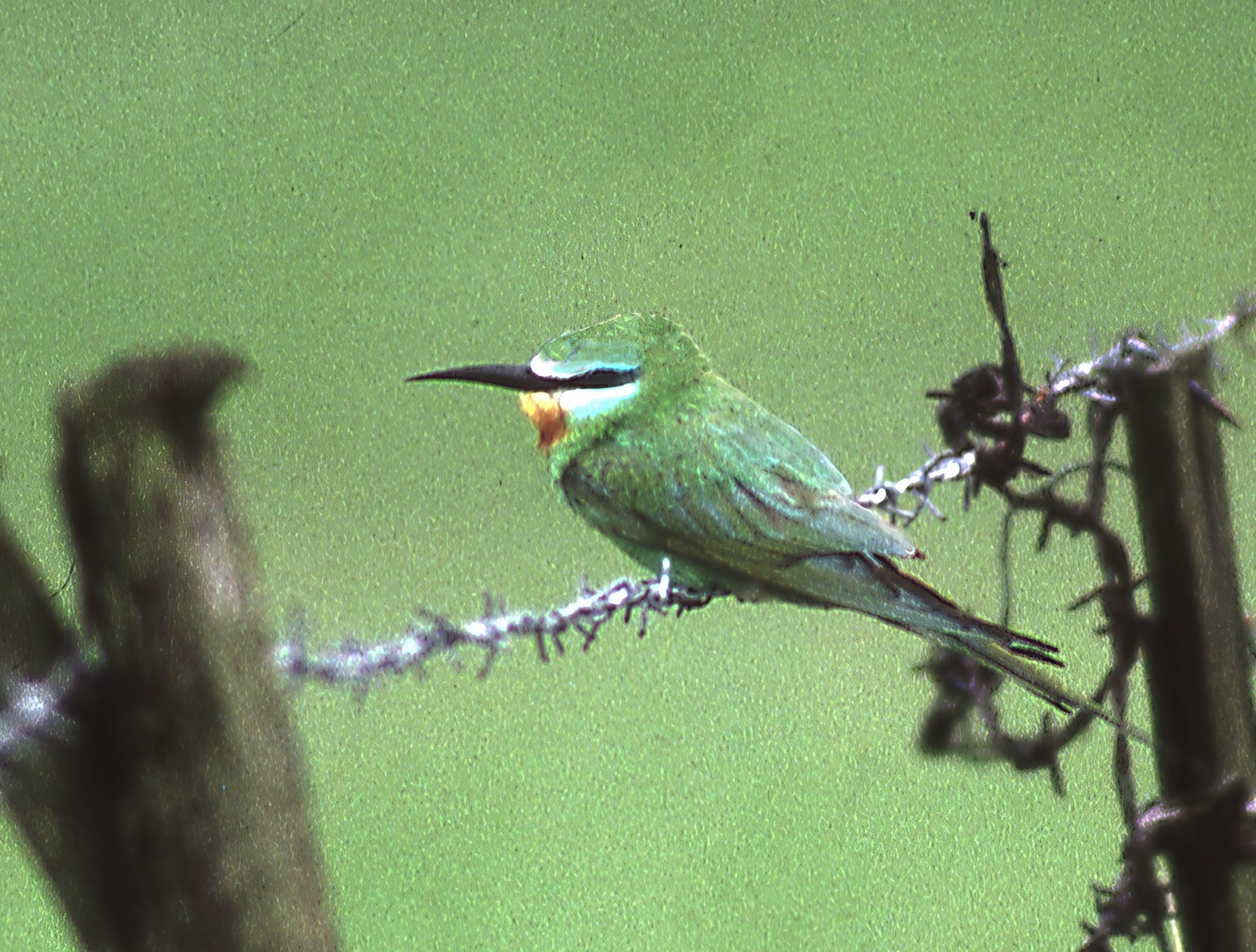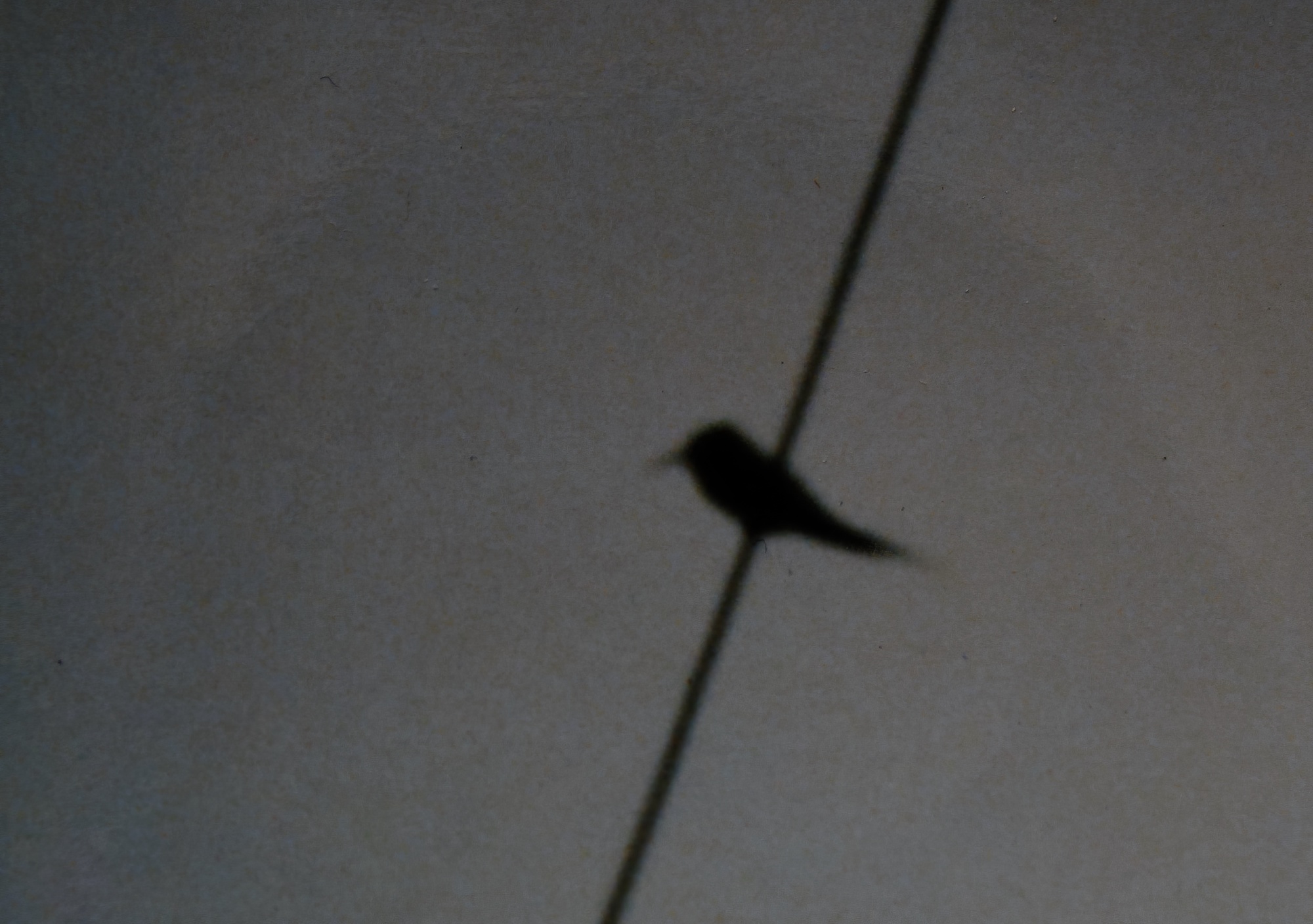Blue-cheeked Bee-eater Merops superciliosus


| Site | First date | Last date | Count | Notes |
| Leverton Marsh | 12/07/1989 | - | 1 | Presumed same as East Yorkshire bird |
New to Lincolnshire: Blue-cheeked Bee-eater at Leverton Marsh, July 12th, 1989
The bird was first seen flying up to some roadside wires inland of the inner sea bank by Mrs Humberstone as she arrived home after shopping. The bird had something in its beak and at first the bird was dismissed as a Mistle Thrush carrying a snail or something at the distance involved. She then realised it was something different by its colour and shape and dashed off home to fetch Mr Humberstone and some binoculars. The bird was watched for about 20 minuets before it was seen to fly off northwards. After the bird had been positively identified with the aid of a suitable field guide, the local Observatory staff at Gibraltar Point, the RSPB Regional Office at Lincoln and the County Recorder were all telephoned, but the bird was not seen subsequently.
The bird seemed to like perching on the roadside wires from which it was seen to drop down and take food items on a couple of occasions from near the ground along a ditch. It was not possible to tell what it picked up but on one occasion it was seen to take a fairly large prey item back to the wires. It then seemed to roll the item around in its bill before swallowing it. It then moved closer along the wires not letting the observers get closer than about 50 metres or so. Some distant photographs were taken but unfortunately these were into the light.
Description
The bird was about the size of a Mistle Thrush and was a typical Bee-eater shape when perched and had pointed wings in flight. It was bright green underneath and had green underparts. It had a long tail – the middle pair of feathers were very long projecting the same length again as the rest of the tail. There was a black stripe through the eye and a bright bluish cast either side of this. The actual eye colour was not seen. The throat patch was orange yellow. It was heard to call a few times with a shrill shriek not unlike a Grey Parakeet. The bird was obviously a Bee-eater and was specifically identified from its overall green colour, including its upperparts, long central tail feathers and head markings.
Mr & Mrs R. Humberstone.
Note: It is presumed that this Lincolnshire sighting involved the same bird as that seen in East Yorkshire just a few days previous and was in the process of making its way back south. The Yorkshire individual was the first widely twitchable bird in the UK and frequented the coastal camp site at Cowden village between July 8th and 10th attracting at least a thousand observers. It disappeared on 10th, flying off high to the south early in the day before then making its brief reappearance at Leverton on July 12th.
Reference

